



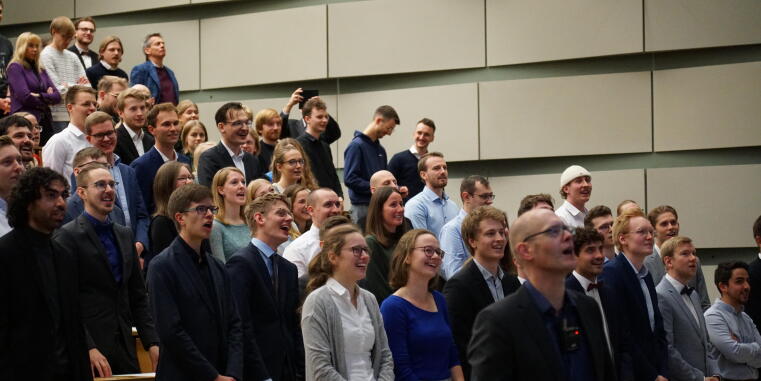
On December 1st, the graduates of the MSc. Food Chemistry together with other graduates of the Master's degree courses in the Faculty of Chemistry and Pharmacy were awarded their certificates. Together with their families and friends, the students had the opportunity to look back on their studies at the festive event and celebrate their achievements.
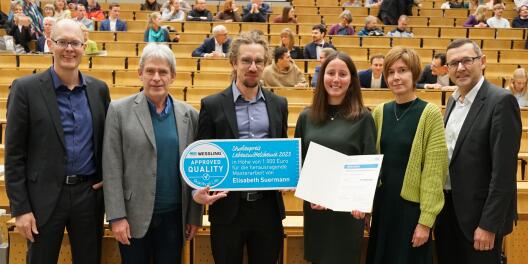
The prize for the best Master's thesis in Food Chemistry at the University of Münster was also presented during the event. The prize, sponsored by the Wessling Group and endowed with €1000, was awarded this year to Ms. Elisabeth Suermann.
The award-winning thesis is entitled "Use of chlorine dioxide to reduce bacterial contaminations in food and drinking water" and was conducted at the Institute of Hygiene in the working group of Prof. Dr. Thorsten Kuczius in cooperation with the Institute of Food Chemistry.
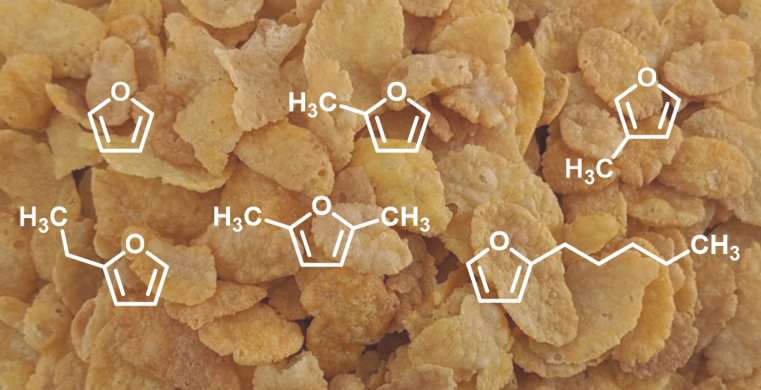
Furan and alkylfurans are formed as so-called process induced contaminants similar to the much better known acrylamide when food is heated. Relevant processes are roasting, extruding, baking, puffing or pasteurizing, so that furan and its structural derivatives have already been detected in coffee, fruit juices, baby food and cereal products. Furan is classified by the International Agency for Research on Cancer (IARC) as possibly carcinogenic to humans (category 2B), so the aim is to minimize the intake of the substances.
Analysis of cornflakes, puffed cereals, muesli and other breakfast cereals
In a current research project carried out by the working group of Prof. Dr. Hans-Ulrich Humpf in cooperation with the cereal processing industry, the occurrence of furan and alkylfurans in 76 different breakfast cereals was investigated in detail. Samples of flakes and cornflakes, extruded products, puffed cereal grains, muesli and crunchy muesli (granola) were analyzed. The products tested were based on different cereals and contained various other ingredients, such as sugar or fat sources. Furan, 2-methylfuran (2-MF) and 2-pentylfuran (2-PF) were most strongly present in the samples. Through her analyses, doctorate student Sarah Lipinski was able to show that the least amount of furan is formed in muesli & granola, which is exposed to the lowest amount of heat during baking. The greatest influence of heat and the highest furan content overall can be found in the puffed grains. High pressure and high temperatures are required to puff the cereal grains, so that furan levels of up to 231 µg/kg and total furan levels of over 600 µg/kg could be detected in these products. The levels of 3-methylfuran (3 MF), which was only present in small quantities in most samples, were also noticeable. Only in breakfast cereals with a high maize content were 3-methylfuran levels of up to 25 µg/kg determined. Carotenoids are suggested to be the precursor for the formation.
No decrease in furan and 2-methylfuran during storage
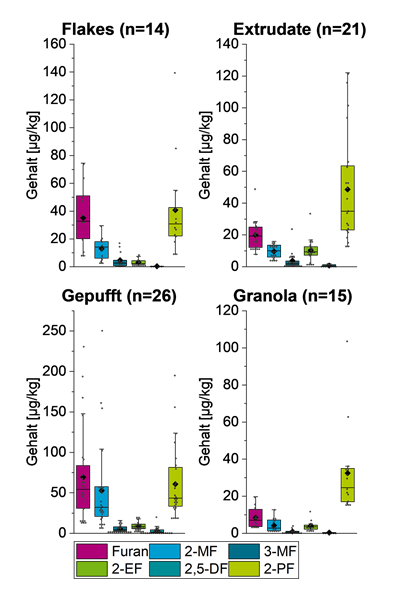
Particularly surprising for the researchers was the observation that the furan and methylfuran contents remained almost unchanged over the entire storage period until the best-before date was reached, although these have a very high volatility (furan has a boiling point of 31.3 °C). The contents of 2-ethyl- (2-EF) and 2-pentylfuran (2-PF), on the other hand, increased over the storage period, which could be attributed to the progressive fat oxidation. The entire publication with detailed information, including the corresponding acrylamide contents, can be found open access in the journal "European Food Research and Technology" and at https://doi.org/10.1007/s00217-023-04374-y and was produced as part of the AiF 21305 N research project. The IGF project AiF 21305 N of the Forschungsvereinigung Forschungskreis der Ernährungsindustrie e.V. (FEI), was funded via the AiF as part of the program for the promotion of joint industrial research (IGF) by the Federal Ministry of Economics and Climate Protection on the basis of a resolution of the German Bundestag
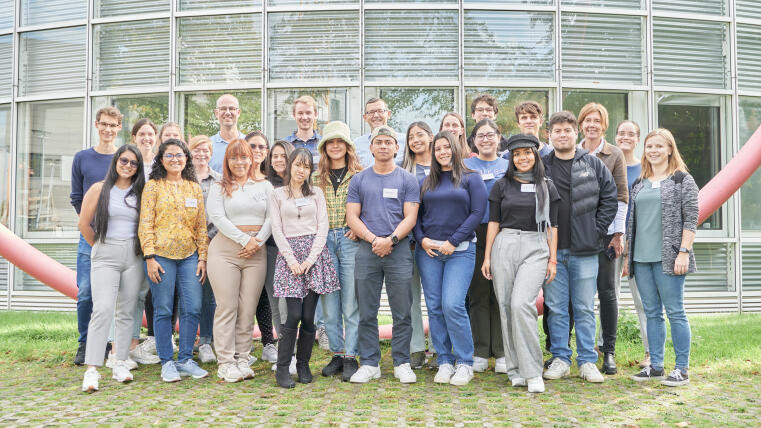
On October 19 and 20, a group of students from the Escuela Superior Politécnica del Litoral (ESPOL) from Guayaquil, Ecuador visited the Institute of Food Chemistry at the University of Muenster. Guided by the professors Dr. Diana Coello-Montoya (ESPOL) and Dr. Melanie Esselen (Uni-MS), the 12 Ecuadorian students of the study program Food Engineering discovered the modern techniques of food analysis and food research in Muenster. In addition to gaining insights into the MSc Food Chemistry program and the doctoral program, the students were also able to examine foodstuffs themselves for the presence of mycotoxins (mold toxins). In addition, various current research projects were presented and discussed in direct exchange with students from Muenster. For the students from Muenster, the presentation of Ecuador as a diverse producer of food such as bananas, coffee or cocoa was particularly exciting.
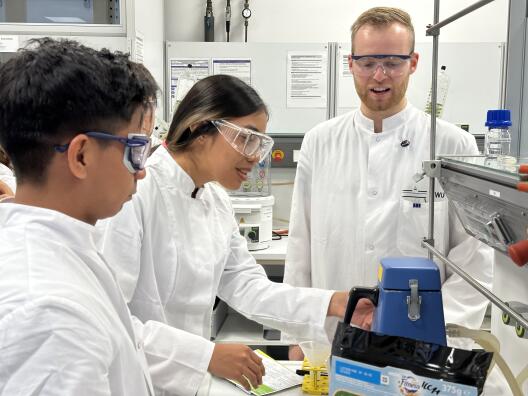
New trends and developments in high-quality products and varieties such as Arriba Nacional cocoa were discussed.
In addition to seminars and laboratory work, intercultural exchange was not neglected – the guests from Ecuador learned Westphalian specialties and the participants from Muenster got to know Latin American dance steps at the joint evening event at the Institute of Food Chemistry. At the end of the DAAD-supported visit, it was clear to all that there is so much that connects the universities and that contact should definitely be maintained.
GRACIAS A TODOS LOS PARTICIPANTES!
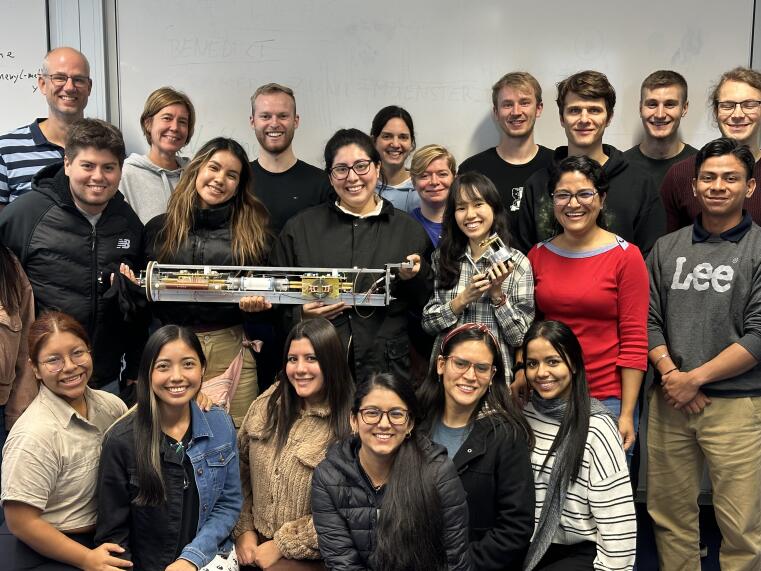
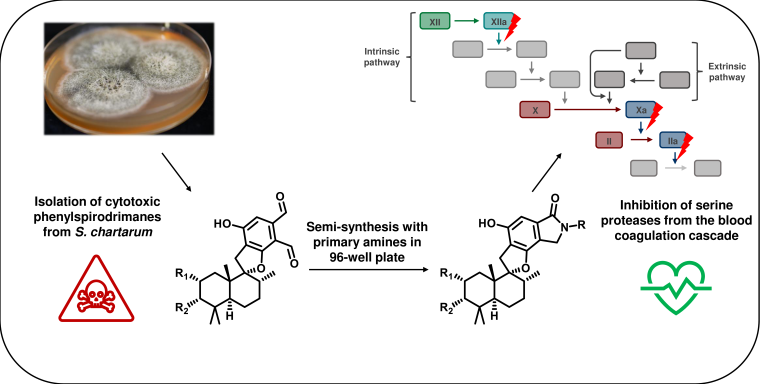
The black mold Stachybotrys chartarum is a pathogenic filamentous fungus whose occurrence has been described particularly in indoor environments. Due to its structurally diverse secondary metabolites, which in some cases are toxic even in low concentrations, long-term exposure to S. chartarum can have adverse health effects. In this context, S. chartarum is mainly associated with respiratory diseases and flu-like symptoms.
Dr. Svetlana Kalinina's research group is primarily interested in the biological activity of natural products in addition to toxicology. In the recent project, the focus was on the inhibition of serine proteases by phenylspirodrimanes (PSDs) produced by Stachybotrys. It was shown that derivatization of the dialdehyde compounds with primary amines has a significant effect on the inhibition of physiologically relevant serine proteases such as thrombin, FXIIa, FXa and trypsin. To investigate the influence of the amino acids used for the derivatization, Katharina Steinert in the frame of her doctorate project developed a micro-scale approach, which allows to minimize the reaction scale to 96-well plates and determine the conversion rates by mass spectrometry. In screening, the inhibitory activity of the products from 35 different reactions could thus be studied in parallel, and purification of the individual reaction products was not required.
In screening, the products of the derivatization of PSDs with the guanidine compound agmatine showed the most potent inhibition of thrombin, which could be confirmed by large-scale synthesis, purification, and activity assays. In further plasma coagulation assays, the most active derivative, acetoxystachybotryactetate-agmatine also demonstrated anticoagulant effects. In addition, the semi-synthetically derived compounds were found to exhibit significantly reduced cytotoxic effects compared to the naturally occurring PSDs. The results of this work were published in ACS Omega (https://doi.org/10.1021/acsomega.2c05681).